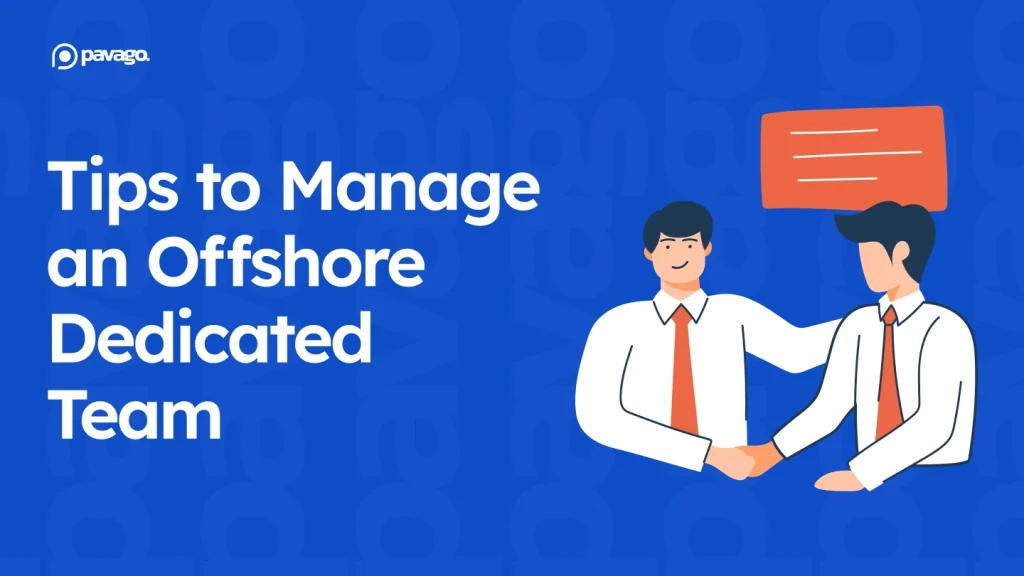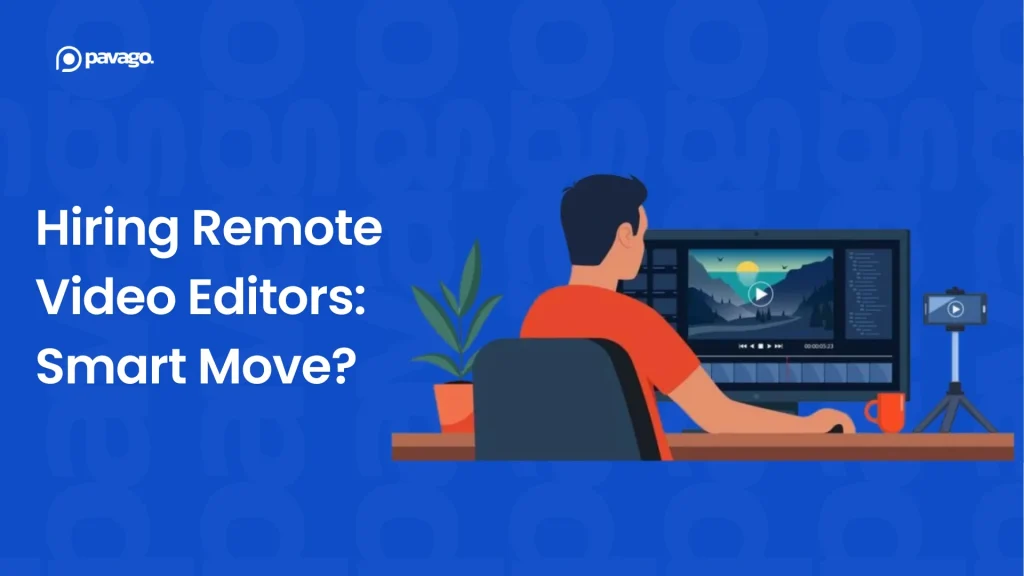If you’re reading this, you’re probably past the “offshore development teams are cost-effective” phase. You’ve either built a development team offshore that’s underperforming, or you’re about to build one and want to avoid the problems that cause several offshore business partnerships to fail every year.
Let’s talk about the real issues with managing offshore development and how to build a successful offshore dedicated team in 2025.
Why Most Offshore Development Teams Struggle
Most offshore team problems don’t come from bad developers or communication issues. They come from three things that catch everyone off guard:
- Wrong expectations: You thought you’d get the same output as your local team, just cheaper
- Poor integration: Your offshore team works separately while you expect them to collaborate seamlessly
- Hidden management costs: You saved money on salaries, but now spend twice as much time managing
Sound familiar? Let’s fix these problems.

Building Your Offshore Dedicated Team: The Decisions That Actually Matter
1. Getting the Right Mix of People
Most companies make the same mistake: they hire too many junior developers to save money, or too many senior developers, and lose the cost advantage.
Here’s what works: The 40-40-20 split
- 40% mid-level developers (3-5 years experience)
- 40% senior developers (5+ years, with at least one team lead)
- 20% junior developers (for simple tasks and growth)
This gives you expertise without breaking the budget, and creates natural mentoring.
2. Testing Developers the Right Way
Technical interviews are mostly useless for offshore engineering teams. A developer who can solve coding puzzles might still struggle with your actual codebase or business problems.
Instead, give them a real problem from your backlog and pay them for the work. Have them review existing code and explain what they see. The key is watching how they ask questions, not just how they answer them.
Test their communication during problem-solving because that’s what they’ll be doing every day on your team.
3. Direct Hire vs. Using Agencies
For offshore dedicated teams, you have two good options. You can work directly with established development companies, which work better for teams of 10 or more people.
Or, you can hire offshore directly with the help of an offshore recruitment agency like Pavago that specializes in sourcing skilled developers from Pakistan and Latin America. This option gives you more control over your team.
Ready to get started?
Pro tip: Avoid agencies that promise “perfect integration” without asking about your current processes. Stay away from companies that won’t explain how they keep developers from leaving, and don’t work with anyone who won’t let you interview individual team members.
Related: Best IT Staff Augmentation Companies
Managing Your Team: What Actually Works
1. The “Always Working” Problem
Your offshore dedicated team sends updates at 2 AM, works weekends, and responds to messages instantly. You think they’re super dedicated. They’re probably just working inefficiently, afraid to ask questions, or covering for poor planning.
Here’s some advice from my personal experience as the HR Manager at Pavago, with a development team spread across 3 continents:
- Fix this with clear boundaries. Set offline hours where there’s no work communication outside the defined times.
- Require questions – each team member must ask at least one question per week.
- Document everything so all decisions are written down with explanations.
- Hold weekly problem discussions with dedicated time to talk about what slowed them down.
2. Communication Structure That Works
Forget generic advice about daily standups. Here’s a system that works:
Daily Communication
- Written status updates (not meetings)
- Shared workspace where everyone can see what’s happening
- Problems get escalated within 4 hours
Weekly Communication
- Video calls for planning and technical discussions
- Cross-team collaboration sessions
- Architecture and design reviews
Monthly Communication
- Performance and career conversations
- Process improvement discussions
- Business context and roadmap updates
3. Using Time Zones as an Advantage
Instead of fighting time zones, use them to work faster. Create a handoff system where your team creates detailed requirements and tickets, the offshore team implements and tests overnight, and your team reviews and provides feedback the next day. This creates a continuous development cycle.
Make the overlap hours count by finding the 2-3 hours when both teams are online and using them for real-time collaboration, not status updates. Use this time for technical discussions, problem-solving, and decision-making that require immediate back-and-forth.
Or if this model doesn’t work for you, you can always go for a nearshore agile development team.
4. Quality Control That Prevents Disasters
Code reviews catch basic errors, but they miss bigger problems like poor architecture or performance issues.
Use three levels of quality control:
Level 1: Automated Checks
- Code formatting and basic error checking before commits
- Automated testing with high coverage requirements
- Performance benchmarks for important features
Level 2: Peer Review with Context
- Code reviews must explain the business reason, not just the technical implementation
- Document important design decisions
- Regular sessions where team members explain their code to others
Level 3: Cross-Team Validation
- Monthly architecture reviews with your local team
- Quarterly security audits
- Regular assessments of technical debt

When Things Go Wrong: Common Problems and Solutions
Problem: Your Offshore Dedicated Team Builds the Wrong Thing
This usually isn’t a competence problem – it’s a requirements problem.
Solution: Make requirements crystal clear
- Before starting any feature, your offshore team must write down their understanding in simple terms
- Include examples of what should NOT happen
- Create simple wireframes or flowcharts for complex features
- Get approval from business stakeholders, not just technical ones
Problem: Adding More People Makes Things Slower
This is Brooks’ Law in action – adding people to a late project makes it later.
Solution: Stop and diagnose first
- Don’t add new team members immediately
- Check how your current team spends their time (are they in meetings all day?)
- Find knowledge bottlenecks (does everything depend on one person?)
- Fix the structure before adding people
Problem: Your Offshore Team Keeps Asking for Specs That Don’t Exist
You’re running like a startup but expecting enterprise-level delivery.
Solution: Invest in documentation
- Accept that you need to spend time writing specifications
- Create a standard template for your specific type of work
- Train your product team to write clear acceptance criteria
- Budget 20% of development time for clarifying requirements
You know, you can avoid these problems by simply hiring offshore developers through Pavago.
We have a pre-vetted talent pool with candidates experienced in working with U.S. companies, so they understand your requirements perfectly.
The Metrics That Actually Predict Success
Forget velocity and story points. Track these instead:
Team Health
- Question-to-answer ratio: Good teams ask 1 question for every 2 answers they give
- Knowledge sharing: No one person should know more than 40% of the critical information
- Proactive updates: 70% of communications should be informational, not asking for help
Business Impact
- Feature usage: What percentage of shipped features actually get used?
- Technical debt: Are you paying down debt faster than you’re creating it?
- Collaboration: How often do your offshore and local teams work together without being asked?
Quality Predictors
- Bug escape rate: What percentage of bugs make it to production?
- Fix time: How quickly can the team fix problems they created?
- Consistency: Are new features following established patterns?
When to Change Direction
Sometimes, offshore dedicated teams don’t work out. Here’s how to recognize when to make a change:
Warning signs you can’t fix:
- Consistent quality problems after 6 months of intensive management
- Cultural conflicts that affect client relationships
- The team can’t work independently despite extensive documentation
- High turnover (more than 30% per year) despite good pay
Your options:
- Nearshore: Move to a closer time zone with a better cultural fit
- Hybrid: Keep some roles offshore while bringing critical functions local
- New partner: Sometimes the problem is the agency, not the offshore model
Related: Offshore vs. Nearshore Talent: How to Make the Right Call?
Preparing for the Future
As AI changes how software gets built, offshore dedicated teams need to evolve:
AI-enhanced teams:
- Use AI for code generation, but rely on your team for architecture and business logic
- Implement AI-powered testing and quality assurance
- Focus your team on high-value work that requires human judgment
Specialization approach:
- Instead of general developers, build teams around specific skills, like Offshore AI Developers, ML Engineers, and Cyber Security Specialists
- Create expertise centers for different technologies or business areas
- Develop your offshore team into product specialists, not just code writers
Frequently Asked Questions
1. What does “offshore team” mean?
An offshore team is a group of professionals located in a different country from your business who work on your projects remotely. The term “offshore” refers to the geographical distance – they’re across international borders, often in different time zones. These teams work exclusively on your projects and operate as an extension of your company, not as external contractors.
2. What does “dedicated team member” mean?
A dedicated team member is a professional who works exclusively on your projects and is allocated to your company full-time. Unlike shared resources who split their time between multiple clients, dedicated team members focus solely on your business objectives. They become familiar with your processes, codebase, and company culture, essentially functioning as remote employees.
3. What is the difference between freelancers and offshore teams?
Freelancers are individual contractors who:
- Work on specific projects or tasks with defined start and end dates
- Often juggle multiple clients simultaneously
- Are responsible for their own project management and deliverables
- Usually charge per project or hourly rates
- Have limited integration with your existing processes
Offshore teams are:
- Groups of professionals working together on long-term engagements
- Dedicated exclusively to your projects and company
- Managed through established processes and team structures
- Integrated into your existing workflows and communication systems
- Focused on ongoing collaboration rather than one-off deliverables
Related: Freelancers vs. Full Time Remote Employees: Pros, Cons, and Key Differences
3. What is the difference between offshore and onshore teams?
Offshore teams are located in different countries, often with:
- Significant time zone differences (6-12 hours apart)
- Different cultural backgrounds and business practices
- Lower labor costs due to economic differences
- Need for more structured communication and management processes
Onshore teams are located in the same country as your business, featuring:
- Same or similar time zones for real-time collaboration
- Shared cultural context and business practices
- Higher labor costs but potentially easier communication
- More opportunities for face-to-face meetings and integration
The key difference is geographical location and its implications for cost, communication, and collaboration, not the quality of work or technical expertise.
Making It Work
Building a successful offshore dedicated team isn’t about finding the cheapest developers or the best project management tools. It’s about creating a system that turns distance and cultural differences into competitive advantages.
Companies that succeed with offshore teams don’t just manage them – they integrate them.
They don’t just save money – they multiply their capabilities.
They don’t just scale development – they scale their thinking.
Your next steps:
- Look at your current team using the metrics above
- Pick your biggest problem from the scenarios described
- Try one new approach from this guide
- Measure the results before adding more processes
The offshore model works when you treat it as a strategic business decision, not just a way to cut costs.
Build a high-performing offshore development team at a fraction of the local cost with Pavago!
We don’t believe in finding “cheap” talent, we believe in finding great talent at fair prices.
















